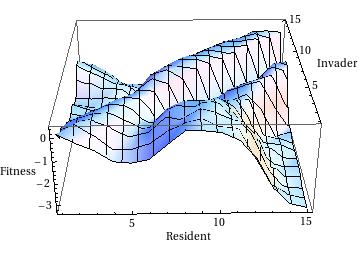

Flocking
I have been working with Graeme Ackland as well as masters students Ewen Tweedie and Sam Yoffe to develop a model that makes the link between evolved behaviours and the characteristics of the component individuals. Our premise is to take a model which exhibits a wide range of behaviour and expose it to a series of evolutionary pressures. The model will exhibit a set of behaviours which can be conclusively linked back to the pressure which led to its formation.
We use the model by Couzin et. al. as our underlying model and parametrise it so as to partially restrict the evolutionary outcomes. We examine foraging and predatory behaviour in two dimensions. Distinct differences emerge in both cases and between the cases. In the predatory case we find the novel result that the prey form two distinct behaviours emerge, one where the boids are slow and tightly clustered, and one where they are fast and form dynamic maneouverable flocks. This corresponds to predators with a high fields of vision and narrow fields of vision respectively.
The article was published in Proc. Royal Soc. B.
I have subsequently attempted to understand transition between the two states be constucted modified forms of pairwise invadability plots. The idea is to start flocks with plausible evolved values, assuming speed is the dominant determinant of this phase and then "invade" this population with a small fraction of indivudals with alternate speeds and use the measured capture rate relative to the expected random capture rate as a proxy for the fitness.
You can do this yourself with the applet below
A sample of mt data is plotted in three dimensions below for the case where ten individuals are inserted and the phenotypic genome is plausable constrained. For viewing convience this is 1 - (probability of capture)/(unbiased probability of capture). The axes run from 1.5 to 5 in increments of 0.25, and not as indicated.

|
View 1
View 2
View 3
View 4
View 5
View 6
|
Raw data for 10 invaders with no noise Fitness, velocity-radius correlations and velocity-theta correlations
This article is submitted to Journal of Theoretical Biology